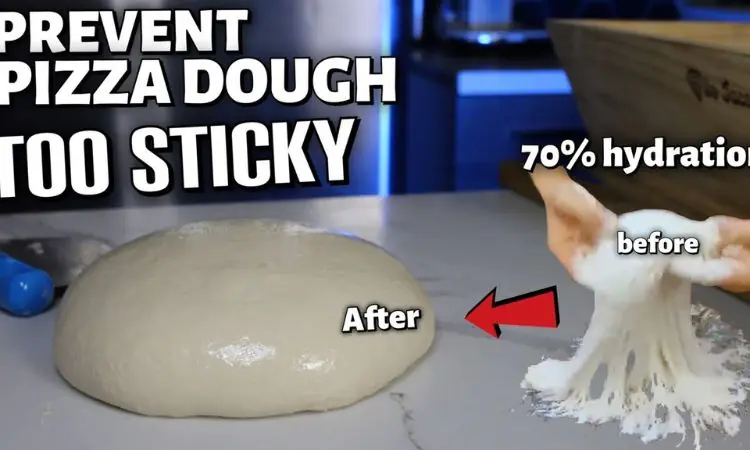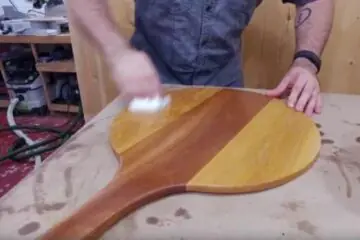Add small amounts of flour and knead to fix sticky pizza dough until the desired consistency is reached. Refrain from overworking the dough, as this can make it challenging.
Creating the perfect pizza dough can be challenging, especially when it turns out to be too sticky. Striking the right balance between the ingredients and the kneading process is crucial for dough that’s easy to handle. Pizza enthusiasts and home chefs alike know the frustration of sticky dough, which can complicate rolling and shaping your perfect crust.
The fix involves a delicate dance of incorporating enough flour to reduce stickiness without rendering the dough too dense or overworked. This culinary adjustment is essential to master for anyone passionate about homemade pizza. Understanding the diplomatic approach to tweaking your pizza dough’s texture will ensure your pizzas come out with a delicious foundation every time.
Trouble With Sticky Dough
Imagine rolling out pizza dough, and it keeps sticking to your hands. Sticky dough is a common challenge for pizza lovers. Solving this can lead to a perfect pizza experience!
The Stickiness Issue
A sticky situation can turn pizza night into a mess. The right texture is essential for rolling and shaping your dough. Sometimes, the dough feels more like glue than a delight. If the dough sticks to everything, it’s time to tackle this head-on! Don’t let sticky dough ruin your culinary artistry.
Why Dough Becomes Too Sticky
Several reasons can lead to overly sticky dough. Understanding these can prevent future pizza mishaps. Here’s a breakdown:
Identifying the cause is crucial. Each issue has a simple fix.
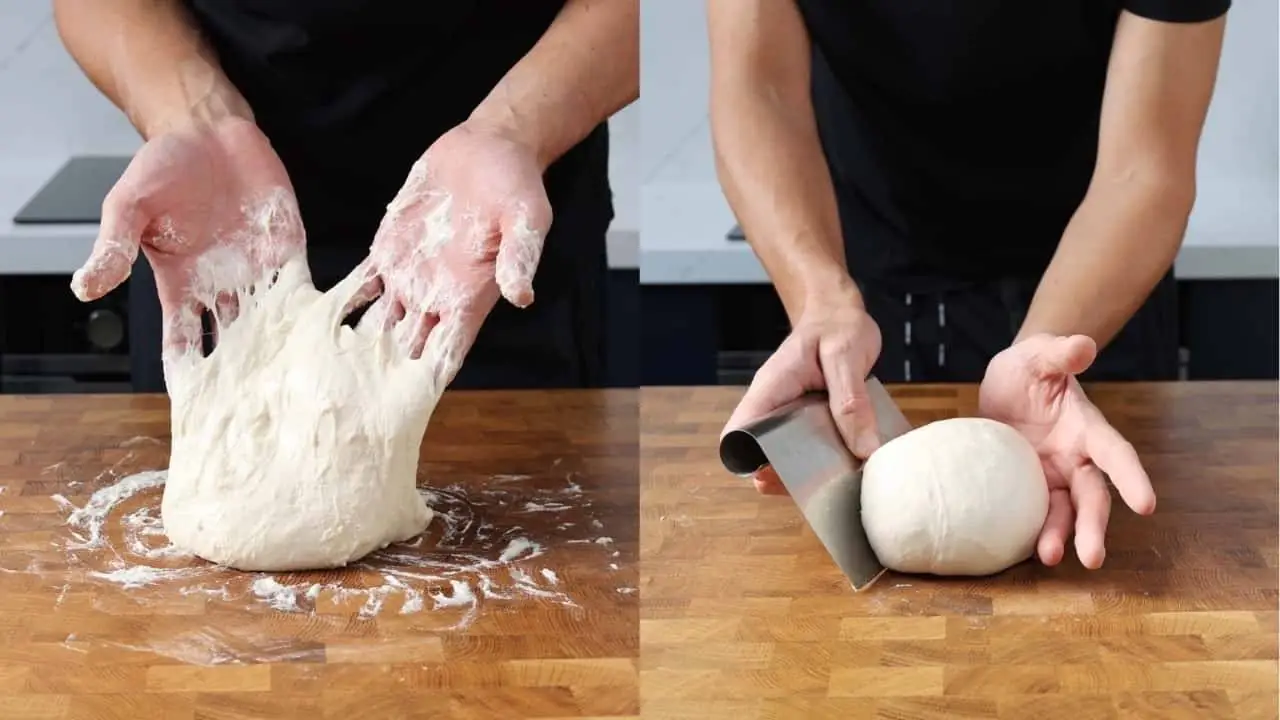
Credit: www.culinaryexploration.eu
Assessing Your Dough’s Stickiness
Picture this: you’re ready to bake a delicious pizza, but your dough is sticky. It’s a common issue, so no worries! Let’s tackle this by first determining the level of stickiness.
Evaluate The Texture
Begin by washing and drying your hands. With clean hands, touch the dough gently. If it feels slightly tacky but not glued to your fingers, that’s normal. Now, try the following:
Sticky dough could mean too much water or not enough flour. Time to adjust!
Is It Too Sticky?
Before adding more flour, remember that hydration can impact flavor and texture. Some recipes call for high hydration, meaning the dough will stickier. Here’s a quick checklist to verify:
Understanding your dough’s needs ensures the perfect pizza base. A sticky situation can lead to delicious results with a bit of knowledge!
Quick Fixes For Sticky Pizza Dough
Encountering sticky pizza dough can put a damper on your pizza-making plans. Sticky dough is tricky to handle and can result in a less-than-ideal crust. Fear not! You can turn that tacky dough into the perfect base for your delicious creation with some quick fixes.
Adding Flour: How Much And How To Add
Adding flour helps make the dough less sticky. Start with a tablespoon at a time. Sprinkle it evenly over your dough. Gently fold the dough on itself, incorporating the flour. Continue this process until the stickiness disappears. Always add small amounts to avoid a dry and tough crust.
Kneading Techniques For Reducing Tackiness
Kneading works wonders on the sticky dough. Use a floured surface to prevent sticking. Push the dough with the heel of your hand. Fold it over and give it a quarter turn. Repeat the process for about 5 to 10 minutes. This technique develops gluten, which makes the dough less sticky and more elastic.
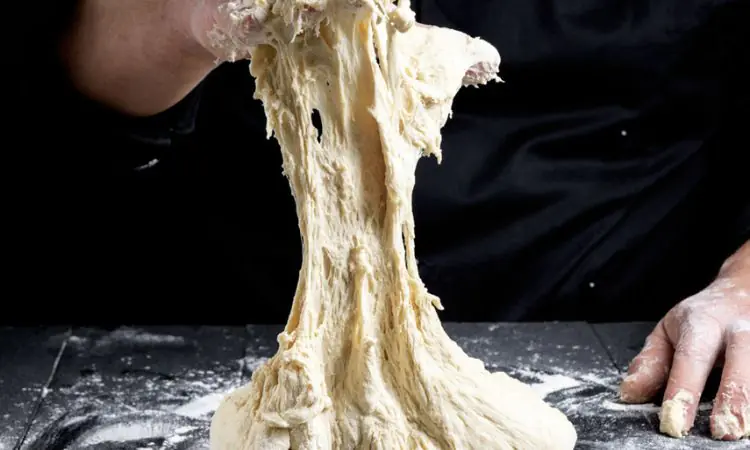
Preventative Measures For Next Time
Say goodbye to the frustration of sticky pizza dough with these handy tips for next time. Mastering the perfect dough texture is easier than you think when you follow these preventative measures.
Proper Flour Measurement
Measuring flour the right way is crucial for dough consistency. Always use a scoop and level method: scoop flour into the measuring cup and level it off with a knife. Avoid packing the flour down, which leads to extra flour and overly dry dough. Use a kitchen scale to measure grams or ounces for even more precision. Accuracy prevents stickiness.
Humidity And Dough Consistency
The air around you impacts your dough. On a humid day, the flour absorbs moisture from the air, which can make the dough stickier. Combat this by:
Keep a close eye on the dough texture; it should feel tacky but not wet.
Optimal Kneading Time
How long you knead affects the dough’s texture. Too little kneading results in a dense pizza, while over-kneading leads to stickiness. Aim for a kneading time of about 7-10 minutes by hand or until the dough is smooth and elastic. This will help develop the gluten just right. When using a mixer, check the dough frequently to avoid over-kneading.
Note your observations: Write down what works and refer back next time. This personalized touch helps perfect your dough-making skills!
Common Missteps To Avoid
Making perfect pizza dough feels like crafting art. But sometimes, your masterpiece can turn into a sticky situation. Stickiness often stems from simple errors during the dough-making process. To save your dough and peace of mind, let’s tackle these common mistakes you should avoid.
Over proofing Pitfalls
Leaving the dough to rise for too long can spell disaster. Overproofed dough loses its structure and turns sticky. To prevent this:
Water-to-flour Ratio Errors
Too much water or too little flour can make your dough resemble a sticky mess. Here’s what to remember:
| Flour Type | Water Absorption | Adjustment Tip |
| High-protein flour | High | Add water slowly |
| All-purpose flour | Medium | Measure accurately |
| Cake flour | Low | Use sparingly for pizza |
Always:
When To Start Over
Encountering sticky pizza dough can result in frustration and wasted ingredients. Recognizing when your pizza dough is beyond salvation is crucial. There comes a point where starting over is the most efficient solution.
Signs Your Dough Is Beyond Rescue
Dough that’s too sticky can sometimes be fixed, but only sometimes. Look out for these signs:
How To Salvage Ingredients
When your dough is a lost cause, consider these tips:
These steps help you save time and reduce waste!
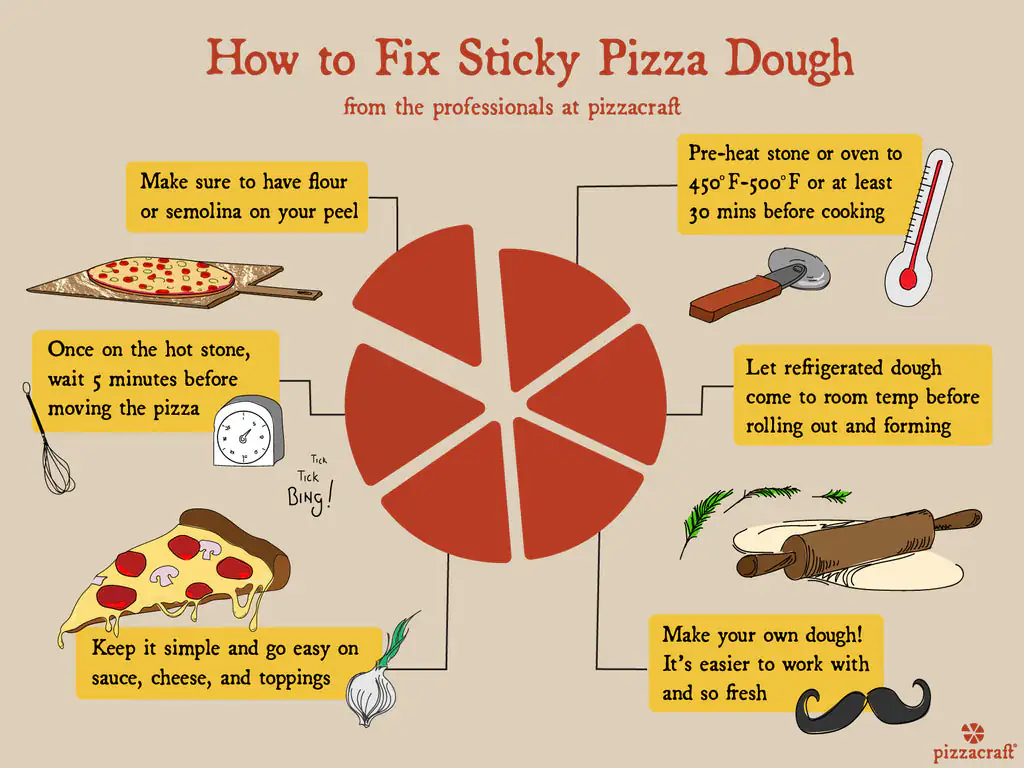
Credit: www.pizzacraft.com
Frequently Asked Questions Of What To Do If Pizza Dough Is Too Sticky
Why Is My Pizza Dough Too Sticky?
The stickiness of pizza dough can often be due to high hydration, insufficient flour, or over-proofing. The dough must have the right balance of ingredients and proper kneading to ensure a manageable texture.
How Can I Fix Sticky Pizza Dough?
To fix sticky pizza dough, sprinkle some flour onto the dough and your hands. Gently knead it until the dough becomes less tacky and more workable. Be careful not to add too much flour, making the dough too dense.
What Causes Pizza Dough Stickiness?
Dough stickiness is usually caused by excessive water content relative to the amount of flour, but factors like humidity, flour type, and yeast activity can also contribute. Correct measurements and adjusting for environmental factors are vital.
Can Over-kneading Make Dough Sticky?
Over-kneading can make the dough sticky because it breaks down the gluten structure. To avoid this, knead just until the dough is smooth and elastic. It should spring back when poked, indicating it has been kneaded sufficiently.
Conclusion
Dealing with sticky pizza dough can be frustrating. Fear not; you’ve learned several practical solutions to tackle this common issue. Remember, a well-floured surface and gradual ingredient adjustments are critical. Keep practicing, and your pizza-making skills will rise like perfect dough.
Ready, set, bake!

As the author of the “Ultimate Pizza Guide: Recipes, Tips & Secrets Revealed,” I’m dedicated to sharing my love for pizza and empowering others to create delicious homemade pizzas with ease. Join me on a journey to uncover the secrets to perfecting your pizza game!
